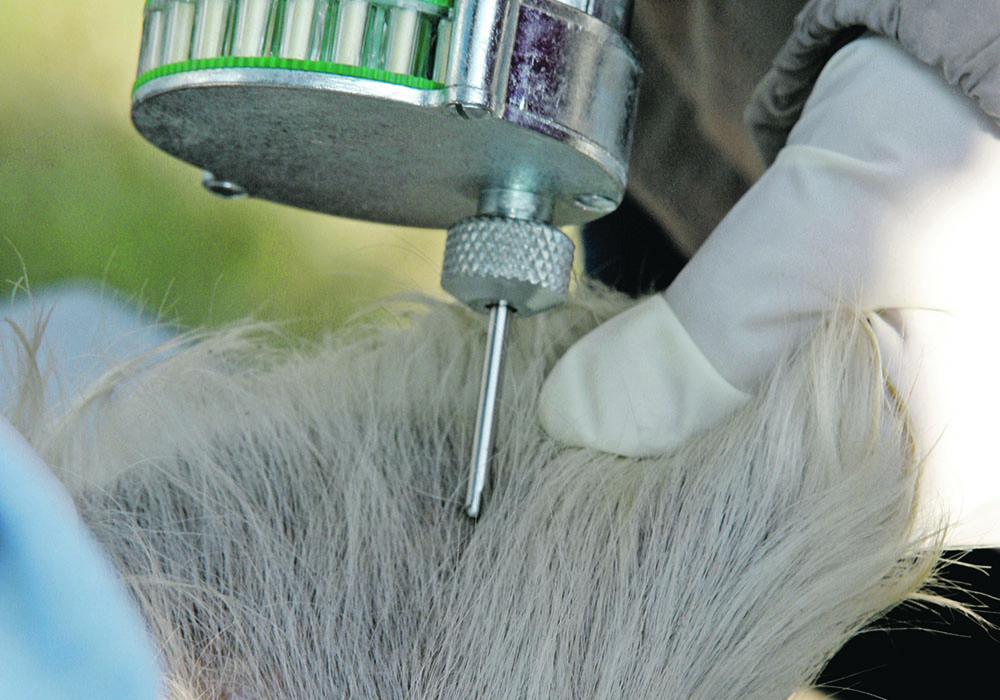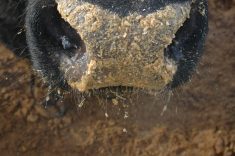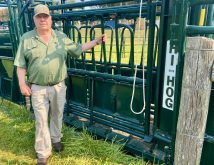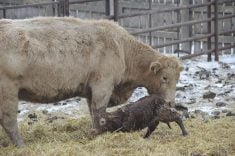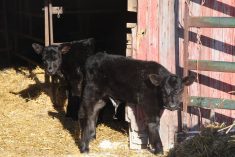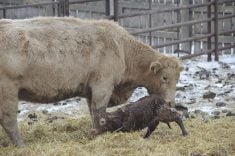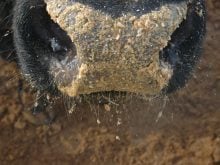Research shows suckling calves given one implant can gain an extra 20 lb. by the time they are weaned
RED DEER — The improved weight gain and feed efficiency among beef cattle receiving growth promoting hormones has been well-studied since these products were approved in the 1950s.
Implanting calves could be an added advantage for cow-calf operators, said veterinarian John McKinnon of Zoetis and former beef industry chair at the University of Saskatchewan.
Field trials show suckling calves receiving a single hormone implant in the spring can gain an extra 10-20 pounds by weaning, he said at the recent Alberta Beef Industry conference held in Red Deer.
Read Also

Farming Smarter receives financial boost from Alberta government for potato research
Farming Smarter near Lethbridge got a boost to its research equipment, thanks to the Alberta government’s increase in funding for research associations.
“When you look at that response of almost 20 lb. and you look at the potential return on investment, you can put the value on that you want. You are looking at a 20:1 return on investment,” he said.
“There are a lot of cow-calf producers who are giving up a significant opportunity in terms of improved weight gain,” he said.
A study is underway to evaluate the economic and environmental impacts associated with removing growth hormones from Canadian cattle. It is expected to be complete in 2023. The Beef Cattle Research Council estimates production costs could be at least 10 percent higher if those products were not used.
A Canadian cow-calf producer survey found the use of growth hormone products for calves varied. Less than one percent of producers used them in Atlantic Canada, 2.4 percent in Ontario and 26.5 percent in Western Canada.
Implants improve weight gain and feed efficiency. Increasing muscle growth rather than fat improves growth rates and reduces the amount of feed required per pound of body weight gained.
Calf implants can increase weaning weights particularly in heifers. The BCRC said heifers implanted with zeranol (Ralgro) at 60 days of age weighed an extra 30 lb. at weaning compared to non-implanted heifers.
Implants should not be used on bulls intended for breeding purposes and no more than once on heifers intended for breeding because they could have delayed puberty or fail to conceive.
Implants are inserted with a special needle between the skin and cartilage of the middle third of the ear. The ear is used because it is not part of the food system.
Once implanted, the active ingredients are slowly released into the animal’s bloodstream. This increases the blood hormone level enough to stimulate additional growth. The animal’s system directs more energy to the production of muscle rather than fat.
According to Alberta extension information, five main uses for implants include the suckling calf, grazing implants, growing cattle, as well as initial and terminal feedlot cattle.
There are two doses of estrogenic implants and two different doses of combination implants. Combination implants contain estrogenic and androgenic (TBA or trenbolone acetate) hormones.
Estradiol-type implants improve gains and efficiency on pasture, as long as pasture quality is adequate and stocking density is optimum to allow gains of at least 1.5 lb. per day. Implanted livestock will consume more forage, and therefore pasture management is critical.
If cattle go on feed from the backgrounding period through to finishing, consider an estradiol-type implant followed with an androgenic type. If the cattle are only on feed for the finishing period, they may be implanted with an androgenic type.
The androgenic type (TBA) implant is most effective when it is used in conjunction with animals receiving high-energy rations (more than 80 percent concentrate barley). Therefore, it is typically used as the terminal implant in the finishing phase in the feedlot.
Growth promotants include ionophores, growth implants and beta agonists.
Ionophores are used to improve nutrient availability to the animal, improve feed efficiency, reduce methane production, reduce the incidence of bloat and acidosis and prevent diseases like coccidiosis.
Long-acting implants are available from pharmaceutical companies and carry advantages and disadvantages, depending on the growth stage of the cattle.
Zoetis, for example, has released Synovex LA-F in Canada for feedlot cattle, which is the same product as Synovex One used in the United States.
Synovex LA-G- is the same as Synovex One Grass in the U.S.
Synovex LA-G contains 150 milligrams of trenbolone acetate and 21 mg of estradiol benzoate and has extended release that lasts for up to 200 days. It can be used on steers and heifers maintained on pasture.
Synovex Choice and Synovex Plus are for steers and heifers in feedlots to increase weight gain.
The new technology uses a patented coating on pellets that dissolves slowly to release hormones.
If feeding cattle for 120-140 days there is no advantage in using the long-range product.
An advantage of the slow release products is the long-lasting effects, so animals do not need to be handled as much.
“When you think about long-acting technology, you don’t have to bring those cattle through for that second re-implant. That one implant carries you through 200 days,” McKinnon said.
When using implants, it is important to consider production goals, length of time on feed, animal weight and sex, environment and facilities to handle cattle.
For a complete guide to hormone use, visit the Beef Cattle Research Council.




